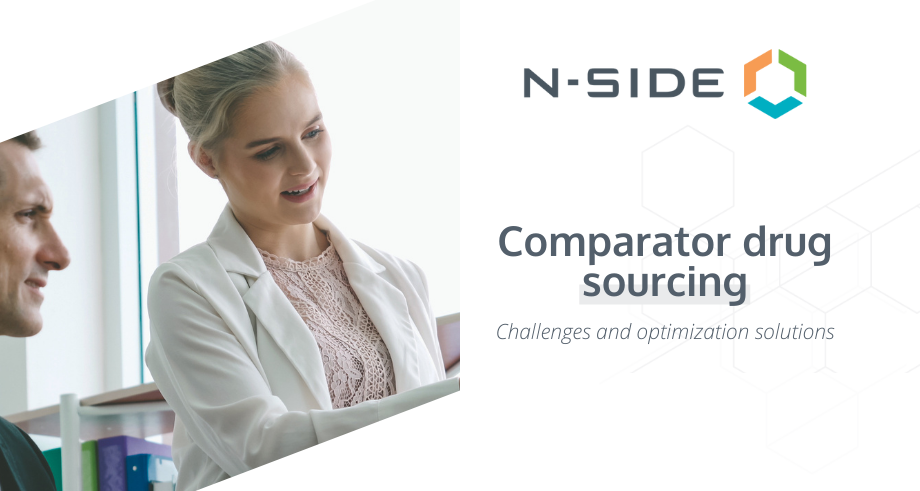Optimize comparator sourcing in clinical trials by reducing overage


Defining a cost-effective comparator sourcing strategy has become one of the biggest clinical trial sourcing challenges.
Comparator sourcing for clinical trials has always been difficult. Now, however, an increasing number of trials require biologics and other innovative comparators, which are more expensive, more difficult to produce, and have a limited shelf life compared to traditional drugs.
At the same time, the growing complexity of trials and the impacts of increased globalization and regulations have made trial demand predictions less accurate, creating additional uncertainty in comparator supply requirements.
The result: In order to source enough comparator to adequately cover risk, sponsors must allocate more and more budget to comparator sourcing.
And sometimes money isn’t enough — constraints on comparator manufacturing can extend the trial timeline or even threaten the success of the trial.
But paying more for more comparators isn’t the only way forward.
Now, thanks to new technology, there’s another way to decrease the impact of comparator sourcing challenges on trial costs, timelines, and risk: reduce required overage.
How to reduce comparator overage for clinical trials
Overage is a necessary part of any clinical trial supply strategy. In order to cover uncertainty and ensure patients will always receive their treatments on time, supply teams must source far more drugs than they’re likely to need.
But because of increasing uncertainty and the difficulty of accurately assessing its impacts, supply teams are forced to be very conservative in their overage estimates.
With the rising costs of comparators, however, drug overage has been put in the spotlight. Why should so much time and money be spent on comparator supply that will ultimately go to waste?
To address this problem, a tool has been developed which can more accurately assess risk to the clinical trial supply chain and recommend precise overage levels.
The N-SIDE Supply App simulates trial conditions using advanced analytics, assesses many different sources of risk, and recommends the minimum comparator overage levels that are needed to cover that risk. It is the only available solution that recommends overage as an output of its analysis, rather than relying on rules of thumb or data from similar trials.
Typically, use of the N-SIDE Supply App results in a 20-60% reduction in total drug waste and a 20-40% reduction in comparator sourcing costs.
This process is known as risk-based optimization, and it enables clinical trial supply teams to develop much more cost-effective comparator sourcing strategies.
Case study: Optimized comparator sourcing in action
How much can be saved by optimizing comparator sourcing? Let’s take a look at a real-world example.
A large biotech company was prepared to start a phase III oncological trial. The trial was a double-blind, double-dummy randomized study with two treatment arms. 460 patients were expected to be recruited.
The comparator drug for the trial costs approximately $7,000 USD per kit. Its expected remaining shelf life was 10 months after QP release.
The initial visit interval was three cycles of four weeks. Using this information, the biotech company calculated a required drug overage of 65%, contributing to an overall trial cost of $85 Million.
Six months before the first patient in, the company partnered with N-SIDE to reduce the overall trial budget. By modeling the trial using the N-SIDE Supply App and testing different scenarios and their impacts on risk and overage, the team was able to optimize the IRT configuration, supply and sourcing plan, and the depot resupply strategy.
Following this optimization, the overage levels for the trial were brought down to 52%, and the total cost was reduced to $76 Million.
But this budget was still unacceptable. The biotech company challenged N-SIDE to find additional ways to optimize their comparator sourcing plan.
More ways to optimize comparator sourcing
The N-SIDE Supply App is a powerful modeling tool that enables clinical supply teams to tweak many different trial parameters and assess the impacts on risk and recommended overage.
Using this functionality, the clinical experts at N-SIDE were able to find three additional ways to optimize comparator sourcing for our partner:
Increasing sourcing frequency
The partner initially planned to source comparator for the trial every five months. But due to the short shelf-life of the comparator drug, this could lead to sharp expiry replacement events with no flexibility in case of delays.
By shifting sourcing frequency from every five months to every two months, the partner was able to increase the overlap between supply campaigns and reduce wastage during expiry replacement events.
Finding additional shelf-life
Shelf-life is an important factor in calculating expected overage. Typically, shelf-life is seen as fixed.
However, the functional shelf-life of a given drug for a trial can be impacted by sourcing, delivery, packaging, and release lead times. In some cases, choosing a manufacturer that can guarantee a shorter turnaround can increase shelf-life and enable additional optimization.
Optimizing trial visit interval
The three-cycle visit interval in the initial trial design, together with high expected drop-out and titrations, was contributing to the unacceptable drug waste and budget.
N-SIDE was able to identify that reducing the visit interval to just one cycle of four weeks would result in dramatic savings in drug waste and cost. The decision to move forward with the new visit interval was made in collaboration with the clinical department.
How much could you save by reducing comparator overage?
As a result of these three additional optimizations, N-SIDE helped our partner reduce total drug waste to just 35%, leading to a total trial cost of $48 Million.
That’s $37 Million in savings compared to the initial estimated cost of the trial, a large portion of which can be attributed to optimizations in the comparator sourcing strategy.
Learn more about optimizing comparator sourcing for your trials:



About the Author
Max is passionate about problem solving and change management. He leads the Solutions Engineering team and has been at N-SIDE for over 7 years of experience. He helps pharmaceutical organizations realize the value of optimization and transform their forecasting & planning processes.
Maxime Derep







